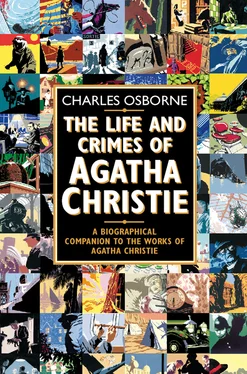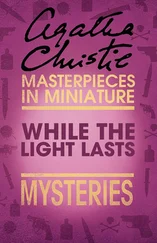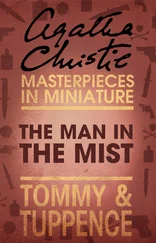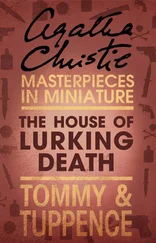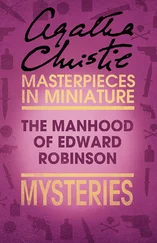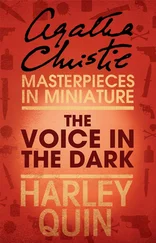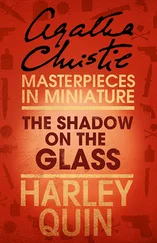The domestics in St Mary Mead are a dim lot, and rather unsympathetically described by Mrs Christie. This may be because she wishes her readers not to consider them as ‘real people’ and therefore potential suspects, but you cannot help observing that Mary, the vicar’s all-purpose servant, is presented as a truculent dim-wit and an appalling cook, that the artist, Lawrence Redding, describes his cleaning woman as ‘practically a half-wit, as far as I can make out’, and that Gladys, kitchen-maid at the Old Hall, is ‘more like a shivering rabbit than anything human’. It should also be noted that Mrs Christie, like the Almighty, helps those who help themselves. The vicar is, for the most part, the essence of Christian charity, but he is prone to make cynical remarks about the ‘thorough-going humanitarian’ and to sneer at Dr Haydock’s sympathy for what the vicar calls ‘a lame dog of any kind’. Sentiments more Christiean than Christian. The police in Agatha Christie novels are not always the comic incompetent butts of the private detective, but Inspector Slack (who also appears in two short stories and in the 1942 novel, The Body in the Library) is a satirically characterized stupid police officer disliked by all, rude and overbearing, and foolhardy enough to allow his contempt for Miss Marple’s suggestions to show.
There is no formula by which you can forecast guilt in the works of Agatha Christie. Nevertheless, for some years after the collapse of the novelist’s marriage to Archie Christie, her readers would do well to cast a wary eye upon any handsome young men in the novels, while keeping in mind the fact that resemblances to Colonel Christie do not automatically stamp a character as the murderer!
On 16 December 1949, nineteen years after the novel’s first publication, Agatha Christie’s Murder at the Vicarage, dramatized by Moie Charles and Barbara Toy, was produced in London at the Playhouse or, as it was tautologically called at the time, the Playhouse Theatre. (The Playhouse still stands, at the Thames Embankment end of Northumberland Avenue.)
A reasonably faithful and straightforward adaptation of the novel, Murder at the Vicarage simplifies the original plot somewhat, and alters the ending, though not the murderer’s identity, in the interests of dramatic effect. The play is set, not in the 1930 of the novel, but in ‘the present time’, i.e. 1949, with references to American airmen being stationed in the village during the war.
With Barbara Mullen as Miss Marple, Reginald Tate (who also directed the play) as Lawrence Redding, Jack Lambert as the Vicar, and Genine Graham as his wife, Griselda, Murder at the Vicarage had a reasonably successful run of four months, and later became popular with repertory companies and amateurs. A production at the Savoy Theatre in the West End of London in 1975, with Barbara Mullen returning to her role of Miss Marple, and Derek Bond as the Vicar, ran for two years.
A television adaptation in two episodes was produced by BBC TV, the first part being shown on Christmas Day 1986, with Joan Hickson as Miss Marple.
The Mysterious Mr Quin SHORT STORIES (1930)
1930 was professionally a busy year for Agatha Christie. In addition to The Murder at the Vicarage, she had two books published and her first play produced. One of the books was a volume in which were collected a number of stories featuring Mr Quin and Mr Satterthwaite, stories which she had written at the rate of one every three or four months for publication in magazines. Mrs Christie refused to produce a series of Mr Quin stories for any one magazine. She considered them to be something special and apart from her usual crime stories, and preferred to write about Mr Quin only when she really felt like doing so.
Twelve of the stories were collected in The Mysterious Mr Quin (published in March 1930). The game is given away almost immediately when one notes that the volume is dedicated ‘To Harlequin the invisible’ and that, in the opening story, an unexpected visitor who ‘appeared by some curious effect of the stained glass above the door, to be dressed in every colour of the rainbow’ announces, ‘By the way, my name is Quin – Harley Quin’. 1 Конец ознакомительного фрагмента. Текст предоставлен ООО «ЛитРес». Прочитайте эту книгу целиком, купив полную легальную версию на ЛитРес. Безопасно оплатить книгу можно банковской картой Visa, MasterCard, Maestro, со счета мобильного телефона, с платежного терминала, в салоне МТС или Связной, через PayPal, WebMoney, Яндекс.Деньги, QIWI Кошелек, бонусными картами или другим удобным Вам способом.
Whenever Mr Quin makes a first appearance in these stories, some trick of the light makes him seem momentarily to be dressed in the motley costume of Harlequin and to wear the commedia dell’ arte character’s mask. Then the illusion vanishes, as Mr Quin is seen to be merely a tall, thin, dark man – and young, according to a fugitive Mr Quin story not collected in this volume – conventionally dressed.
A by-product of Agatha Christie’s youthful interest in the characters of the commedia dell’ arte and of the sequence of Harlequin and Columbine poems, ‘A Masque from Italy’, in The Road of Dreams (1924), Mr Quin is the friend of lovers, and appears when some crime which threatens the happiness of lovers is committed. Usually, however, he does not himself directly intervene to solve a problem, but works through his intermediary, Mr Satterthwaite, ‘a little bent, dried-up man with a peering face oddly elf-like, and an intense and inordinate interest in other people’s lives’.
Despite the elf-like face, there is nothing supernatural about Mr Satterthwaite, a gentleman of means, in his sixties, and someone whom life has passed by, who has always been merely an onlooker. After his first meeting with Mr Quin in ‘The Coming of Mr Quin’, he discovers within himself an ability to penetrate to the heart of mysteries and to solve problems, but only when Mr Quin is there to act as catalyst, to reveal to him what it is that, unconsciously, he already knows.
Mr Quin and his emissary Mr Satterthwaite were, according to Mrs Christie, two of her favourite characters, so it is hardly surprising that their stories should be among her very best. Sometimes Mr Satterthwaite encounters Harley Quin at the Arlecchino, a Soho restaurant. At other times, they meet, as if by accident, at a country pub, the Bells and Motley. Once, very appropriately, Mr Satterthwaite (who, oddly for such a connoisseur of the arts, thinks the opera Cavalleria Rusticana ends with ‘Santuzza’s death agony’) encounters Mr Quin at Covent Garden in the interval between Cav and Pag. (The clowns in Pagliacci perform a Harlequinade, and one of them, Beppe, impersonates Harlequin.)
On one occasion, Mr Quin persuades Mr Satterthwaite to travel all the way to Banff, in the Canadian Rockies, to find a clue which brings a criminal to justice and reunites two young lovers. Not surprisingly, Mr Quin turns up at Monte Carlo at Carnival time to intervene in a story involving a soi-disant Countess who consorts with men (‘of Hebraic extraction, sallow men with hooked noses, wearing rather flamboyant jewellery’!)
One of the most curious stories in the volume is ‘The Man from the Sea’, which takes place on a Mediterranean island. Mr Satterthwaite muses on the role of Isolde which a young protégée of his is about to sing in Germany, and encounters a young man contemplating suicide. It is a story in which, you sense from the quality of the prose as much as from anything else, Mrs Christie’s beliefs concerning the meaning of life, not very original, perhaps, but her own and deeply held, are involved. And there are four paragraphs, not essential to the plot, in which the last moments of a dog’s life are described: paragraphs whose observation, imagination and compassion are the equal of many a novelist generally thought vastly superior in literary ability to Agatha Christie.
Читать дальше
